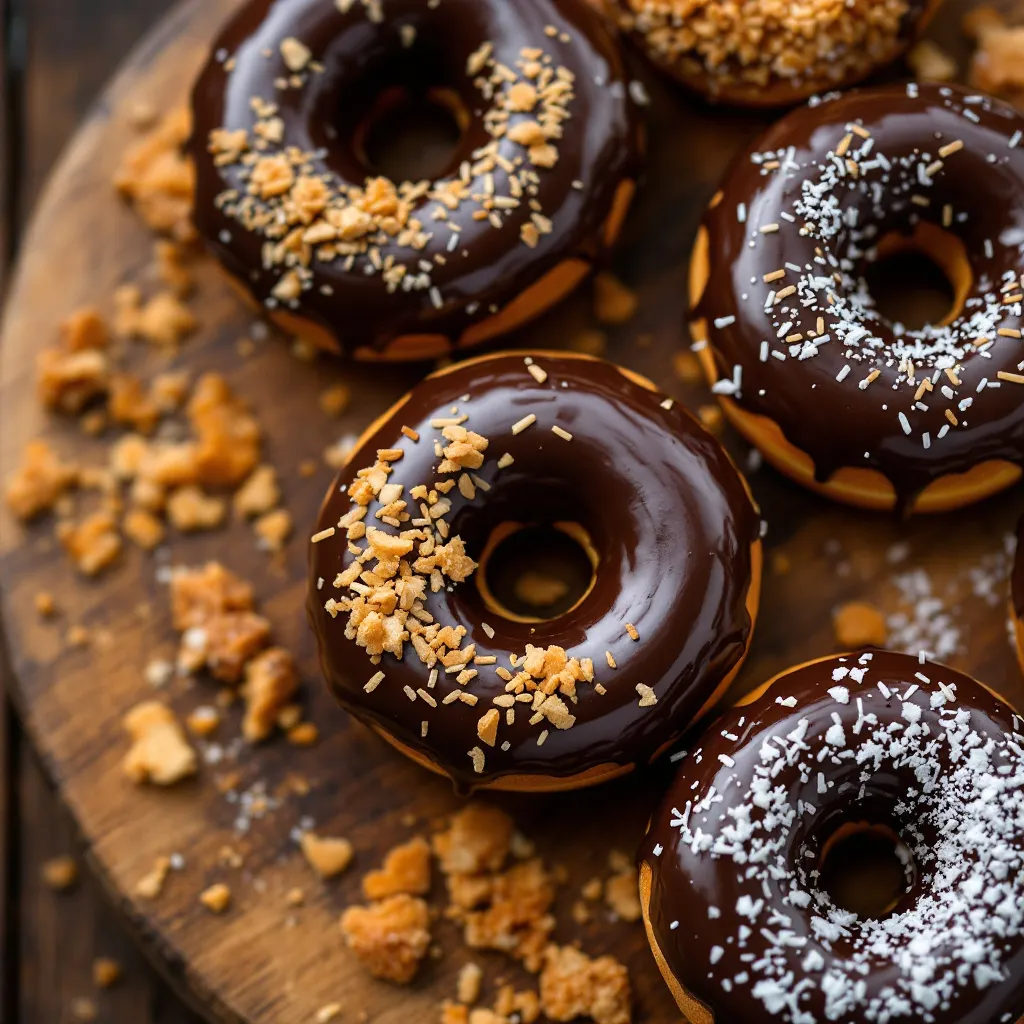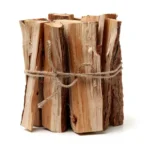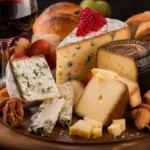Now Reading: The Ultimate Guide to the Chocolate Old Fashioned Donut
-
01
The Ultimate Guide to the Chocolate Old Fashioned Donut
The Ultimate Guide to the Chocolate Old Fashioned Donut

There are few simple pleasures in life quite like biting into a perfectly made donut. And among the vast universe of donut varieties, the chocolate old fashioned donut holds a special, cherished place. With its craggy, textured surface, dense yet tender cakey interior, and rich chocolate glaze, it’s a timeless classic for a reason. This guide will explore everything you need to know about this delightful treat, from its unique history and characteristics to how you can even try making it at home. It’s more than just a breakfast item; it’s a piece of culinary art that has delighted people for generations.
This article will dive deep into what makes the chocolate old fashioned donut so irresistible. We will uncover its origins, break down the ingredients that give it its signature texture, and compare it to other popular donut styles. You’ll also find tips for finding the best ones and a recipe to bring this classic into your own kitchen.
What Exactly is an Old Fashioned Donut?
Before we add chocolate to the mix, it’s important to understand what makes an “old fashioned” donut distinct. Unlike the light, airy yeast-risen donuts that are smooth and puffy, old fashioned donuts are made from a cake-like batter. The key difference is the leavening agent. Old fashioned donuts use chemical leaveners like baking powder or baking soda, which cause the batter to react and rise during the frying process. This chemical reaction, combined with a slightly lower frying temperature, creates their signature bumpy, cracked appearance. That irregular surface is perfect for catching glaze, making every bite a mix of crunchy edges and soft, cakey center. The chocolate old fashioned donut takes this beloved base and elevates it with a deep, cocoa-rich flavor.
The History Behind the Name
The term “old fashioned” isn’t just a marketing gimmick; it genuinely refers to an older, more traditional method of donut making that predates the widespread use of commercial yeast for doughnuts. These donuts harken back to a time when home bakers and small shops relied on simple cake batters. The rustic, imperfect look was a natural result of hand-cutting and frying these denser batters. While modern donut shops have perfected the technique, the soul of the chocolate old fashioned donut remains rooted in this simpler, classic approach. It’s a nostalgic treat that connects us to the history of American baking, a craft that values substance and flavor over uniform perfection.
The Anatomy of a Perfect Chocolate Old Fashioned Donut
What sets a truly great chocolate old fashioned donut apart from a mediocre one? It comes down to a perfect balance of texture and flavor. The exterior should have a satisfyingly crisp, almost crunchy shell, especially around its characteristic cracks and ridges. This provides a wonderful contrast to the interior, which should be dense, moist, and cakey, but not heavy or greasy. The chocolate flavor needs to be front and center, whether it’s infused into the batter itself, delivered through a rich glaze, or both. A hint of vanilla or buttermilk in the batter can also add a layer of complexity that complements the deep cocoa notes.
Key Ingredients and Their Roles
The magic of a chocolate old fashioned donut lies in its simple, yet specific, list of ingredients. Each one plays a crucial part in creating the final masterpiece.
- Flour: All-purpose or cake flour provides the structure. Cake flour can result in a more tender crumb.
- Sugar: Adds sweetness and helps create a tender texture.
- Fat: Butter or shortening contributes to the rich flavor and moistness of the cake.
- Eggs: Act as a binder, holding the ingredients together while adding richness and structure.
- Leavening: Baking powder is the star, creating the carbon dioxide bubbles that give the donut its lift and signature cracked surface during frying.
- Buttermilk or Sour Cream: The acidity in these ingredients reacts with the leavening, tenderizes the crumb, and adds a subtle tang that balances the sweetness.
- Cocoa Powder: This is what makes it a chocolate old fashioned donut. High-quality unsweetened cocoa powder provides a deep, rich chocolate flavor.
- Frying Oil: A neutral oil with a high smoke point, like canola or vegetable oil, is essential for frying the donuts to golden-brown perfection without burning.
Chocolate Old Fashioned vs. Other Donut Types
In the diverse world of donuts, it’s easy to get them confused. Understanding the differences can help you appreciate what makes the chocolate old fashioned donut so unique.
|
Donut Type |
Leavening Agent |
Texture |
Defining Characteristic |
|---|---|---|---|
|
Old Fashioned |
Baking Powder/Soda |
Dense, cakey, with a crisp exterior |
Cracked, irregular surface |
|
Yeast-Risen |
Yeast |
Light, airy, chewy |
Smooth, puffy appearance |
|
Cake Donut |
Baking Powder/Soda |
Soft, cake-like, uniform |
Often baked, smooth, dense crumb |
|
Cruller |
Pâte à choux dough |
Light, eggy, hollow |
Twisted or fluted shape |
Yeast Donuts: The Puffy Cousin
Yeast-risen donuts, like the classic glazed ring, are made from a dough that rises before frying. This fermentation process creates a light, airy, and slightly chewy texture. They are typically smooth and uniform in shape. A chocolate old fashioned donut, on the other hand, gets its lift from a chemical reaction in the hot oil, resulting in a much denser, cake-like consistency.
Standard Cake Donuts: The Smoother Sibling
While both are “cake” donuts, the standard cake donut is often made with a looser batter that is deposited directly into the fryer in a perfect ring shape. This results in a softer, more uniform crumb and a smooth exterior. The old fashioned variety uses a stiffer dough that is rolled and cut, and its unique texture comes from the way it cracks and opens up as it fries. This craggy surface is what many fans consider its best feature.
How to Spot a High-Quality Chocolate Old Fashioned Donut
When you’re at a bakery, your eyes can tell you a lot about the quality of a chocolate old fashioned donut before you even take a bite. Look for deep cracks and a craggy, irregular shape. This indicates it was fried correctly, allowing the surface to split and create those delightful crispy edges. The color should be a deep, even brown, not pale or burnt. A good glaze should be shiny and coat the donut without being excessively thick or drippy, perfectly settling into all the nooks and crannies. If the donut looks perfectly smooth and round, it’s likely not a true old fashioned.
Baking at Home: A Simple Recipe
Ready to try making your own? Crafting a chocolate old fashioned donut at home is a rewarding project. While it requires careful attention to temperature, the process is straightforward.
Dough Ingredients:
- 2 ¼ cups all-purpose flour
- ½ cup unsweetened cocoa powder
- 1 ½ teaspoons baking powder
- ½ teaspoon salt
- ¼ teaspoon nutmeg
- ⅔ cup granulated sugar
- 2 tablespoons unsalted butter, melted
- 2 large egg yolks
- ⅔ cup buttermilk
Simple Chocolate Glaze:
- 2 cups powdered sugar
- ¼ cup unsweetened cocoa powder
- 4-5 tablespoons milk
- 1 teaspoon vanilla extract
Step-by-Step Instructions
- Prepare the Dough: In a large bowl, whisk together the flour, cocoa powder, baking powder, salt, and nutmeg. In a separate bowl, whisk the sugar, melted butter, and egg yolks until combined.
- Combine Wet and Dry: Gradually add the dry ingredients to the wet ingredients, alternating with the buttermilk. Mix until just combined—do not overmix. The dough will be sticky.
- Chill the Dough: Wrap the dough in plastic wrap and refrigerate for at least 1 hour, or until firm. This is a critical step to make the dough manageable.
- Cut the Donuts: On a floured surface, roll the chilled dough to about ½-inch thickness. Use a donut cutter to cut out the rings.
- Fry the Donuts: Heat 2-3 inches of vegetable oil in a heavy-bottomed pot to 325-330°F. Carefully place a few donuts in the oil. Fry for 90 seconds on each side, until they crack and are cooked through.
- Cool and Glaze: Remove the donuts with a slotted spoon and let them cool on a wire rack. Whisk the glaze ingredients together until smooth. Dip the top of each cooled chocolate old fashioned donut into the glaze and let it set on the wire rack.
Pairing Your Donut: Coffee, Milk, and More
The rich, deep flavor of a chocolate old fashioned donut makes it a perfect companion for a variety of beverages. The most classic pairing is, of course, a simple cup of black coffee. The bitterness of the coffee cuts through the sweetness of the glaze and complements the cocoa notes beautifully. For a creamier experience, a latte or cappuccino works well. If you’re not a coffee drinker, a cold glass of milk is a nostalgic and perfect match, balancing the donut’s richness. For an unexpected but delightful pairing, try a dark stout beer; its roasted malt flavors echo the chocolate in the donut.
The Enduring Popularity of a Classic
In an age of trendy pastries and elaborate food fads, the chocolate old fashioned donut remains a steadfast favorite. Its appeal lies in its simplicity and textural perfection. It doesn’t rely on flashy fillings or over-the-top toppings. Instead, it delivers a deeply satisfying experience through its contrasting textures of a crunchy exterior and a moist, dense interior. Its timeless nature is a testament to the idea that some of the best foods are those that perfect the fundamentals. As noted in a discussion on classic recipes, sometimes the old ways are the best ways, and this donut is proof. This commitment to classic quality is something publications like https://forbesplanet.co.uk/ often highlight in culinary trends.
Conclusion
The chocolate old fashioned donut is more than just a sweet treat; it’s a piece of baking history that continues to delight with its unique texture and rich flavor. From its craggy, glaze-catching surface to its dense, cakey interior, every element is designed for maximum satisfaction. Whether you pick one up from your local bakery or take on the rewarding challenge of making them at home, this classic donut offers a comforting and delicious experience. Its enduring popularity proves that you don’t need fancy gimmicks to create a truly memorable food—just quality ingredients and a time-honored technique.
Frequently Asked Questions (FAQ)
Q: Why is my old fashioned donut greasy?
A: A greasy donut is usually the result of the frying oil not being hot enough. If the oil temperature is too low, the donut absorbs more oil instead of quickly cooking and crisping up on the outside. Be sure to use a thermometer to maintain a consistent temperature of around 325°F.
Q: Can I bake these donuts instead of frying them?
A: While you can bake the dough, you will not achieve the signature craggy texture of a true chocolate old fashioned donut. Baking will result in a softer, more uniform cake donut. The cracking and crispiness are a direct result of the hot oil frying process.
Q: How do I store homemade chocolate old fashioned donuts?
A: They are best enjoyed the day they are made. However, you can store them in an airtight container at room temperature for up to two days. Do not refrigerate them, as this can cause them to become dry and stale more quickly.
Q: What is the difference between Dutchie and an old fashioned donut?
A: A Dutchie is a type of Canadian yeast-risen donut that contains raisins and is typically covered in a sugar glaze. An old fashioned donut is a cake-based donut with a denser texture and a cracked surface, and a chocolate old fashioned donut specifically has a rich cocoa flavor. They are fundamentally different in both their base dough and final texture.
















